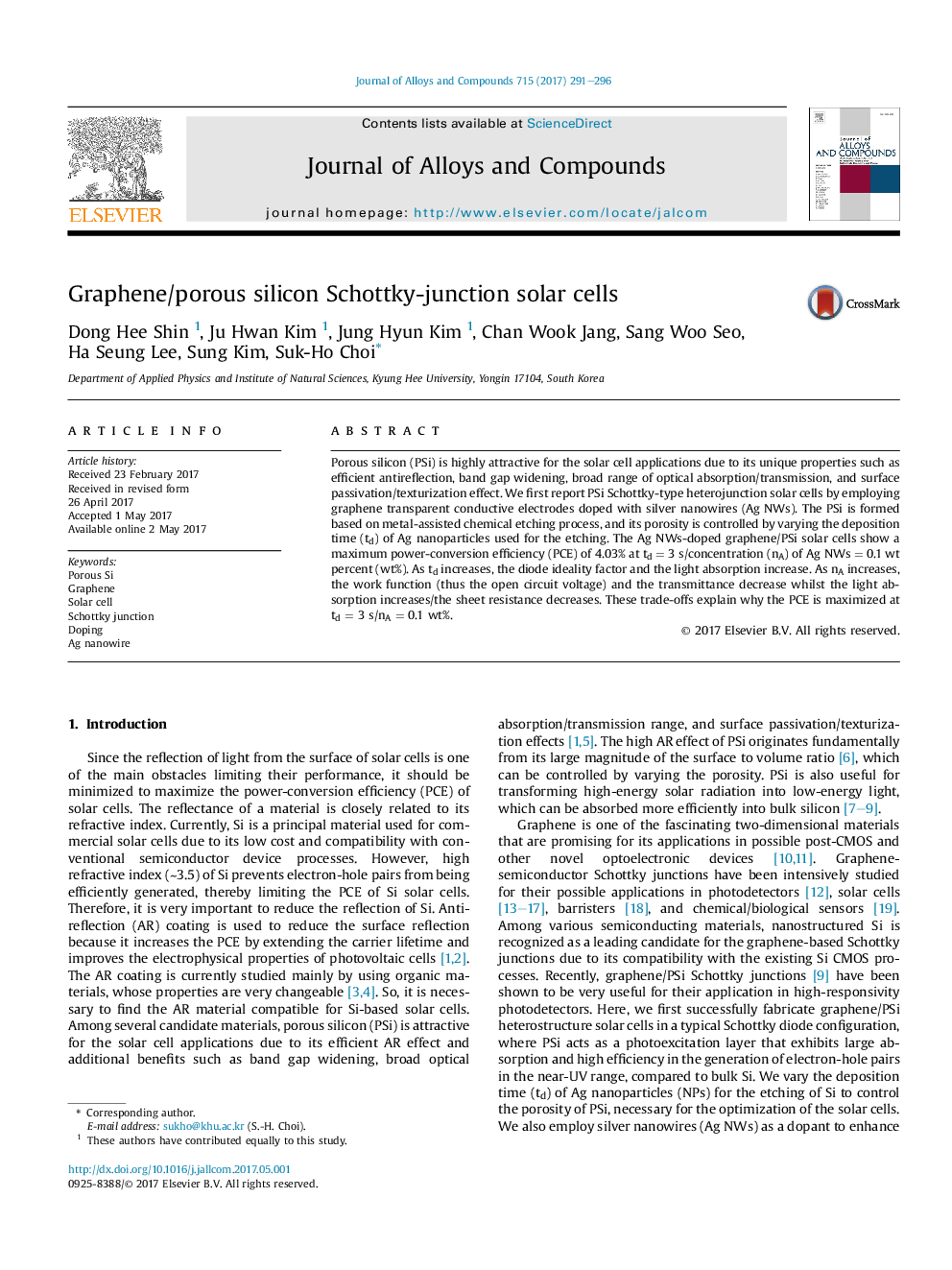| Article ID | Journal | Published Year | Pages | File Type |
|---|---|---|---|---|
| 5459193 | Journal of Alloys and Compounds | 2017 | 6 Pages |
Abstract
Porous silicon (PSi) is highly attractive for the solar cell applications due to its unique properties such as efficient antireflection, band gap widening, broad range of optical absorption/transmission, and surface passivation/texturization effect. We first report PSi Schottky-type heterojunction solar cells by employing graphene transparent conductive electrodes doped with silver nanowires (Ag NWs). The PSi is formed based on metal-assisted chemical etching process, and its porosity is controlled by varying the deposition time (td) of Ag nanoparticles used for the etching. The Ag NWs-doped graphene/PSi solar cells show a maximum power-conversion efficiency (PCE) of 4.03% at td = 3 s/concentration (nA) of Ag NWs = 0.1 wt percent (wt%). As td increases, the diode ideality factor and the light absorption increase. As nA increases, the work function (thus the open circuit voltage) and the transmittance decrease whilst the light absorption increases/the sheet resistance decreases. These trade-offs explain why the PCE is maximized at td = 3 s/nA = 0.1 wt%.
Related Topics
Physical Sciences and Engineering
Materials Science
Metals and Alloys
Authors
Dong Hee Shin, Ju Hwan Kim, Jung Hyun Kim, Chan Wook Jang, Sang Woo Seo, Ha Seung Lee, Sung Kim, Suk-Ho Choi,
